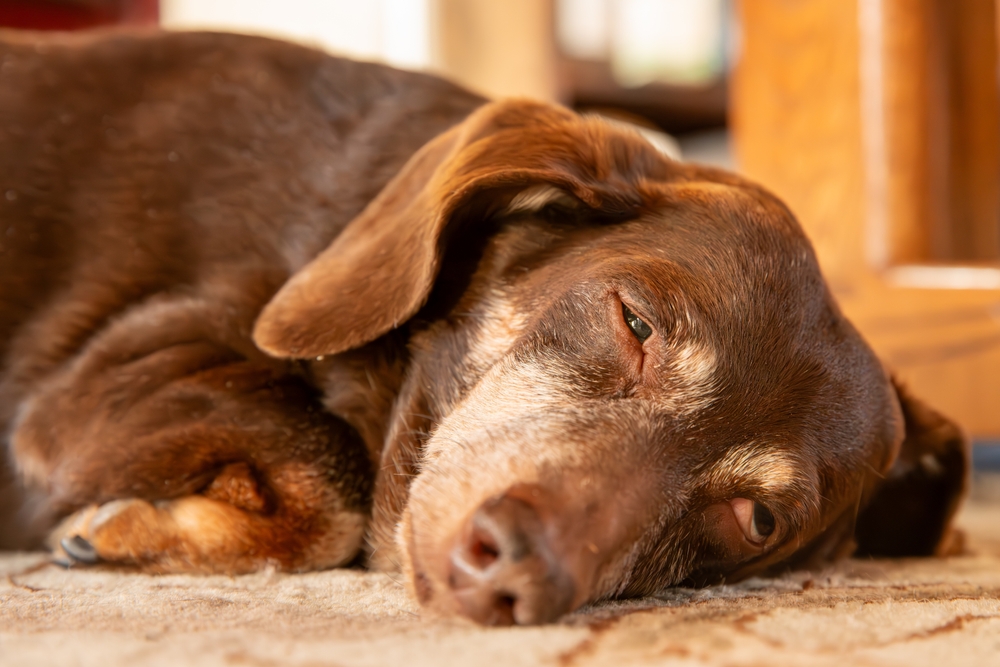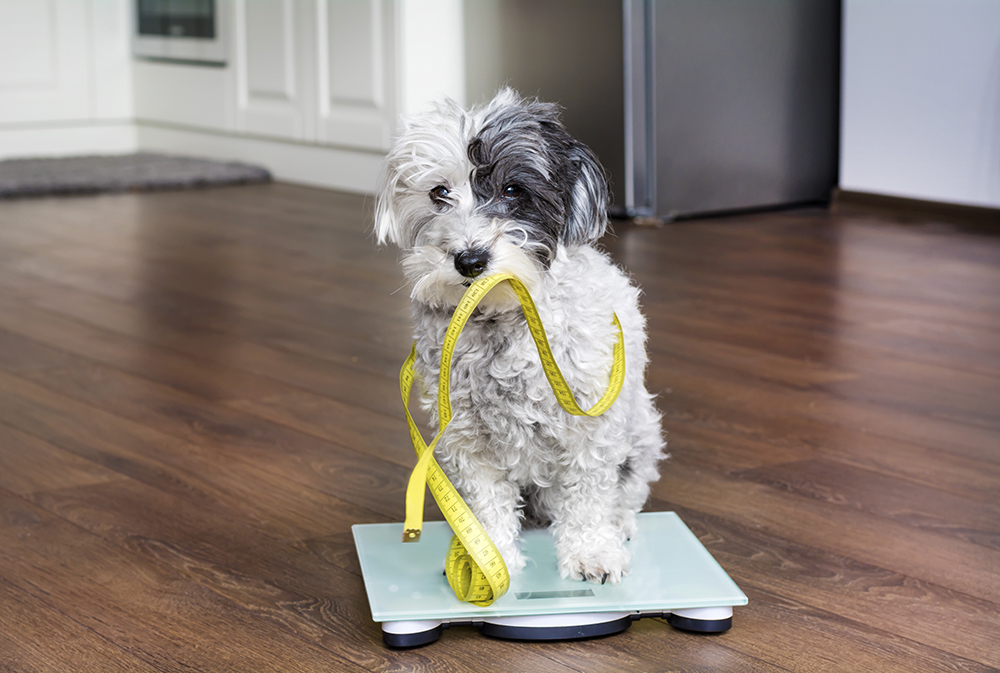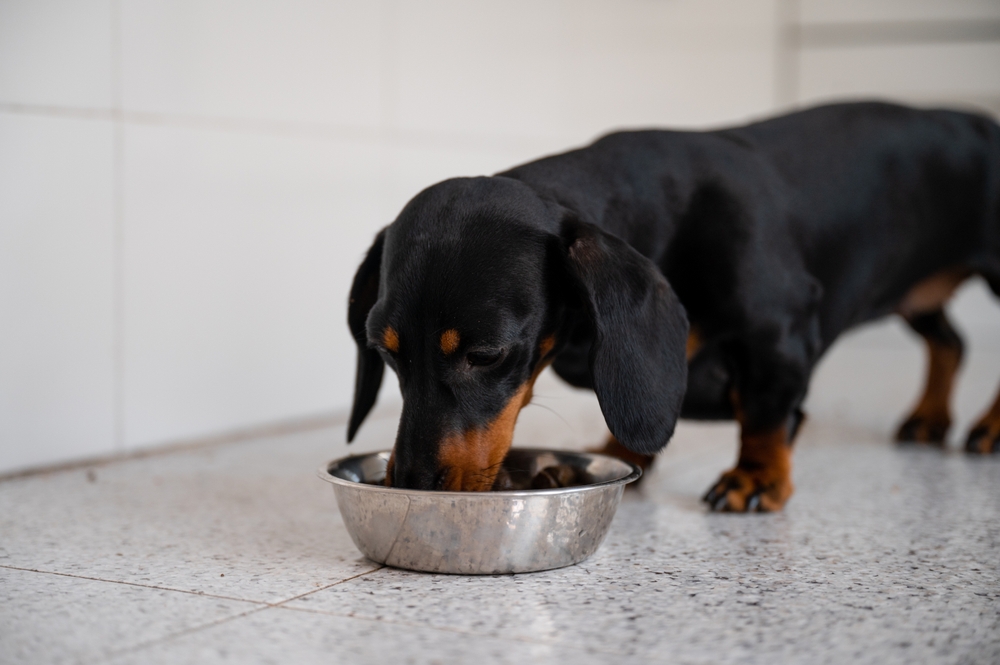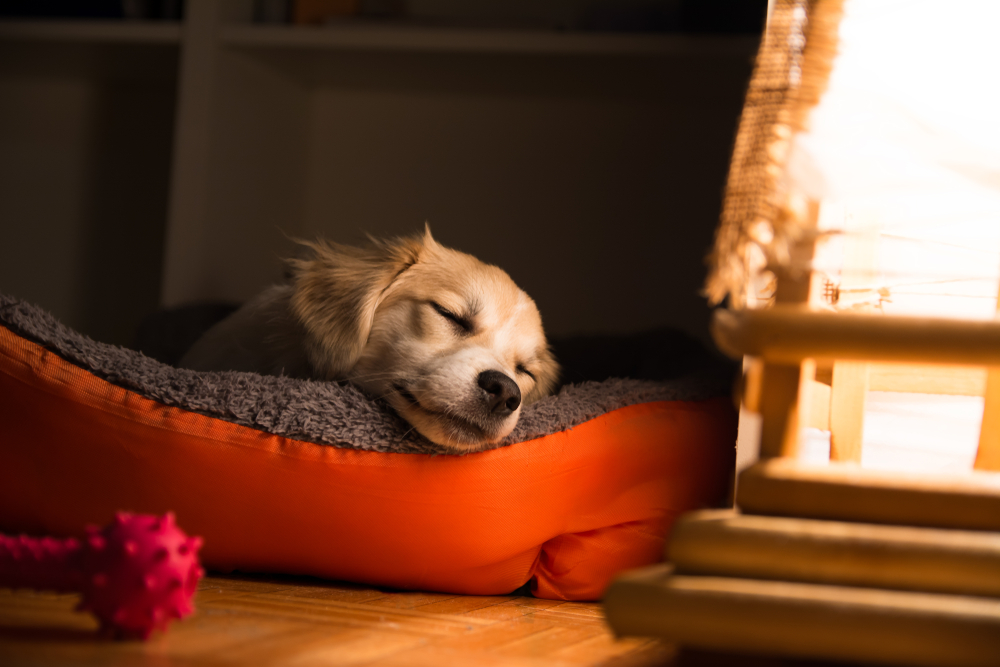[ad_1]
Sleep apnea is a sleep disorder in which breathing stops and restarts during sleep. This potentially serious disorder affects anywhere between 10% and 30% of adults 1, but can our canine counterparts also suffer from it?
Yes, your pup can absolutely develop sleep apnea. Though sleep disorders in dogs are uncommon, sleep apnea is one of the top four that vets deal with. Read on to learn more about this disorder and what you need to know if you think your dog has it.

What Is Sleep Apnea in Dogs?
Two types of sleep apnea affect humans: obstructive sleep apnea (OSA) and central sleep apnea (CSA). Only OSA has been noted in dogs.
OSA occurs when a dog stops breathing while they’re asleep due to their airways being squeezed or becoming blocked. When this happens, air cannot reach the lungs. The cessation of breathing sometimes occurs numerous times throughout the night.

What Are the Signs of Sleep Apnea in Dogs?
The most common signs of sleep apnea in dogs include:
- Choking
- Coughing
- Snoring
- Tiredness
- Gasping
- Noisy breathing
- Interrupted sleep
- Pauses in breathing
- Purple gums (cyanosis)

What Causes Sleep Apnea in Dogs?
Though there are few studies on OSA in dogs specifically, it appears that the condition has many of the same causes as OSA in humans. However, the most common cause of sleep apnea in dogs is due to their anatomy.
Brachycephalic Breeds
Sleep apnea in dogs is most often seen in brachycephalic breeds. These breeds have shorter skull bones, resulting in a pushed-in, squished appearance. Due to the length of these bones, the airway structures are altered, resulting in physical problems for these dogs. Their internal nasal structures (nasal turbinates) are often abnormal, making it difficult for them to breathe through their noses.
Despite their shorter snouts, brachycephalic dogs still have regular-sized soft tissue structures like their tongues, soft palates, and tonsils, which cut into the amount of space they have to breathe. This reduced space can cause a host of issues and lead to a condition known as brachycephalic obstructive airway syndrome (BOAS)2.
Brachycephalic breeds include English Bulldogs, Pugs, Boxers, Boston Terriers, Pekingese, etc.
Obesity
Dogs that are overweight or obese are more likely to develop sleep-disordered breathing than their healthy, weighted counterparts. Obese dogs may develop fat buildups that put too much pressure on their airways, making breathing more difficult while awake and asleep.

Obstructions
While brachycephalic dogs experience obstructions in their airways due to their anatomy, other obstructions can occur later in a dog’s life. They could develop polyps or tumors that grow in the nose or throat, making it difficult to breathe as they grow.
Allergies
Dogs who suffer from allergies that inflame their nasal passageways can experience sleep-disordered breathing. This can include allergies to food or outdoor and environmental allergens.

How Does Sleep Apnea Affect Dogs?
Sleep apnea can negatively affect dogs in many of the same ways it can affect humans.
Dogs require sleep, and most get around 11 hours of shut-eye per day. Sleep helps with brain development, memory, immune system functioning, and learning capacity. Dogs that are deprived of sleep may be more prone to infections and bad moods.
What Is the Treatment for Sleep Apnea in Dogs?
The treatment for sleep apnea in dogs isn’t quite as simple as it is for humans. Most people with OSA use a device known as a continuous positive airway pressure machine, or CPAP for short. Unfortunately, no CPAP has been approved for use in dogs yet, so vets are limited in their treatment options.
The most common treatments for canine sleep apnea include:
- Lifestyle changes. If a dog’s sleep apnea is caused by excess weight, a reduced-calorie diet and an increase in physical activity may be recommended by your veterinary team.
- Medication. Some studies suggest that medication such as ondansetron may be able to help dogs with sleep-disordered breathing patterns.
- Surgery. In some situations, surgery may be required to correct breathing issues caused by anatomical issues.

Does My Dog Have Sleep Apnea if They Snore?
Snoring can be a sign of sleep apnea in dogs, but just because your pup is snoring doesn’t mean they have OSA. Snoring can be caused by the same factors that cause sleep apnea, including the structure of their airways, allergies, and obesity. If snoring is new for your dog, we recommend having them examined by your veterinary team to rule out any potentially serious conditions.

Final Thoughts
Though rarely seen in dogs, sleep apnea is a potentially serious condition that affects how dogs breathe during sleep. There are several causes, but it is most commonly noted in brachycephalic breeds. If you believe your pet is exhibiting signs of sleep apnea, it’s important to discuss your concerns with your veterinary team so they can put together a treatment plan to get your pet sleeping and feeling their best again.
Featured Image Credit: Daniel Besic, Shutterstock
[ad_2]
Source link
